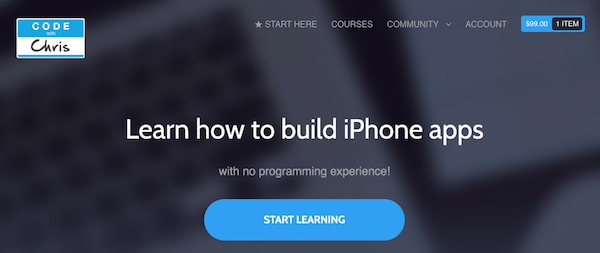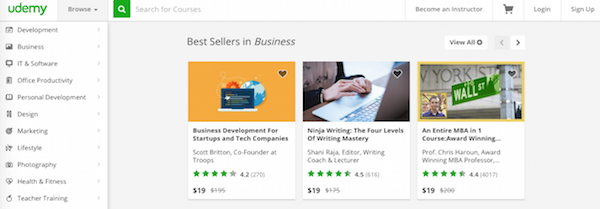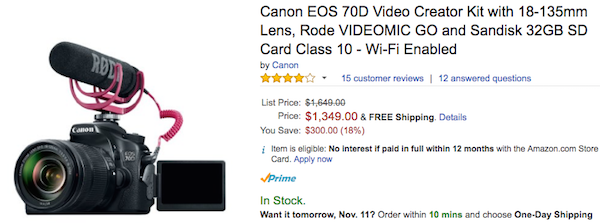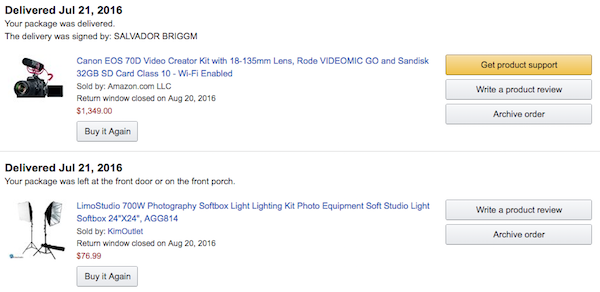I’m about to talk about a few different ways that you can use software to create and sell your very first online course. I’ll also go a bit into how they differ from one another.
To give you some context, I’ve sold online courses through a variety of platforms. They are one revenue stream that contributed to my first six figures online. Over time, I’ve worked to improve my training products and the software that I use to deliver the content.
The reason that I included online courses as one way to create passive income this year is because you don’t have to physically be there for the transaction to take place. You can wake up and find that a student on the other side of the world decided to enroll in your course.
I hope that you find these software tools to be helpful. Let me know if you have any questions as a comment down below!
1. Teachable: Hosts Your Course Content
Of all of the software tools that I’ve used, I’ve found Teachable to be the easiest to get started. I always liked the way that Udemy gives you all the software that you need to launch an online course. However, I didn’t want to be a part of a marketplace with low-priced courses. I wanted a private solution.
Teachable came on my radar after listening to the Smart Passive Income podcast. I also attended one of their networking mixers in Brooklyn. They seem like a great team committed to making it easier for teachers to monetize their work.
Teachable allows you to customize your own “school,” set up learning tools like quizzes, create an affiliate program, track course completion, offer payment plans, and more. I think they have a very robust backend interface. What I like most is that you don’t have to host the course software.
At the time of writing, their pricing ranges from Free to $299/month.
You can also look into Thinkific if you’re looking for a provider that will host your course content.
2. OptimizePress: WordPress Plugin
I used OptimizePress initially to host and sell my online course. The WordPress plugin gives you a lot of functionality, like the ability to create sales pages and nice-looking course pages.
When you’re running a WordPress website, one of your top concerns is going to be security. How do you create a private membership area that people will only gain access to once they enroll in the course? OptimizePress gives you that functionality.
However, all of this functionality does have some down sides. You’re probably going to have to go through a few training videos to learn how to use the software and link up your PayPal or payment processor. The other downside was that since I was hosting the course content, I’d get complaints if my website was ever down or if a customer didn’t get a registration email from my web server.
Still, this is very professional course creation content. Lots of great functionality for a one-time price. At the time of writing, the pricing ranges from $97 to $297.
3. Sensi by WooCommerce: WordPress Plugin
I discovered Sensi after taking a great online course on how to make an iPhone app, which was made by CodeWithChris. At the time, I wanted to learn Swift, so that I could make an app.
I was very impressed with his design, user interface, and course layout. I found out that he was using a Wocommece Theme along with some plugins like Sensei Course Progress, the Woothemes Sensei Plugin, and more.
The Sensei Plugin allows you to create lessons, quizzes, charge for your course, and do user registration. There are also free and paid extensions. For example, you can download Sensei Certificates to award students who complete one of your courses.
If you’re looking to host your own course content and you are looking for a WordPress plugin, I’d look into Sensi. At the time of writing, the pricing starts at $129.
4. Udemy: Course Marketplace
Udemy is a popular online course marketplace where you can buy and sell courses. You can use the software to put together your own course and offer it for sale to your audience.
I think that Udemy is a great option if you’ve never created a course before. You can also quickly get an idea of which courses are popular on the site and what other students are saying. According to the website, there are over 20k instructors who earn an average of $8k.
While you get a bunch of functionality out of the box and don’t have to handle payment processing or user signups, there are some downsides. The marketplace also tends to highlight lower-priced courses, meaning that it’s not ideal for a professional premium-priced product. Also, Udemy slashed the amount to pay out to instructors. They’ve been seeing some tension in their user base.
“Over the past few years, Udemy’s tightening grip on its marketplace has twice taken instructors’ trust to the breaking point. The first break was in 2013, when Udemy abruptly changed the revenue share model, causing widespread furor. Instead of giving an instructor 70 percent of the revenue when his course was sold with the help of Udemy marketing, he would only get a 50-percent cut.” – Read More.
Even though the Udemy gold rush is over, you can sell earn revenue on the platform and it’s pretty easy to get started. It’s free to create a course. You’ll keep 100% of the revenue when you promote your course and 50% when Udemy promotes it.
5. Cannon EOS 70D Creator Kit: Great Filming Camera
I believe in investing in quality tools. For example, when I started podcasting, I got a more expensive high quality microphone because I wanted to commit to the new initiative. I wanted to produce high quality audio.
I have a similar approach to video. I started out filming on my iPhone and then transitioned to the Cannon EOS 70D. I ended up going with the creator kit because it came with a microphone and some other goodies. I also got a set of lights, which you can see below.
Overall, I’m pretty happy with these purchases. I like that the EOS 70D has great autofocus technology, so I haven’t had to fiddle with any settings to start making videos. To give you an idea of the quality, I’ve embedded a YouTube video below, where I shared how I earned my first six figures online.
Of course, there are other video cameras that you can get, and you can even use your iPhone. Just make sure you either get a lapel mic or some other microphone so that there’s good audio. At the time I’m writing this, the EOS 70D starts at $1299 and comes with a 18-135mm STM Lens. The camera body alone is $999.
6. Screenflow: Screen recording software
You can use the free screen recoding software that comes with a MAC called QuickTime Player (not sure about windows), but Screenflow is going to give you a lot more options.
Screenflow lets you record, edit, and share your screen recordings. You can also record your iPhone or iPad screen. Whether you’re looking to record just a window or your entire screen, you can do that using this software.
Arguably, one of the most powerful parts of Screenflow is its editing interface. Rather than using iMovie or another software tool, you can edit your training videos directly in the application and add transitions, annotations, text and more.
At the time of writing, this software costs $99.
7. Wistia: Video Hosting & Analytics
I use Wistia to host the videos that are related to my online course. This way, if I ever decide to change course providers, I can just embed the Wistia videos and I don’t have to re-upload all of the content. The other reason I use it is I like the functionality the tool gives you.
At the end of each video, you can set a particular call-to-action message, whether that’s to sign up for an email newsletter or to check out a website. Of course, you can also customize thumbnails and the look and feel of the player. However, the most powerful features come in the form of analytics.
“Every view generates a heatmap, which shows exactly which parts of the video the viewer watched, skipped, and rewatched. Trend Graphs let you track how your entire video library performs over time.”
If you’re trying to create effective content, this type of information is invaluable. It will show you which videos are boring or not useful. You can then re-tool your content to create an even better course.
8. Keynote or PowerPoint: Teaching With Slides
The last software tool that I’m going to include in this list is Keynote, or if you’re a Windows user, PowerPoint.
Slides are a great way to illustrate key points, highlight graphics, and demonstrate complex concepts. You can also combine static slides with dynamic screen recordings and traditional video to get your points across.
I’d recommend recording your voice with a high quality microphone. Here are a few different microphones that you can look into. When I was first getting started, I purchased the Blue Yeti Microphone, which has worked out pretty well.
I also purchased a pop filter for the microphone and made a mini foam box, because my recording location was a bit echoey.
So, What’s Next?
This blog post by no means covers the full range of tools that you can use to create and sell your own online course. These are simply some of the solutions that I’ve used or have come across and recommend looking into.
While it takes some effort and it’s a bit of a financial investment, creating an online course is a great way to build up your passive income. There are other ways to grow a lifestyle business, but courses do have many advantages.
I hope that you found this article to be helpful! Let me know if you have any questions in the form of a comment below.











